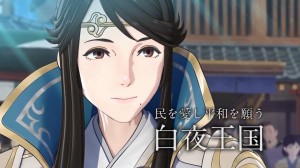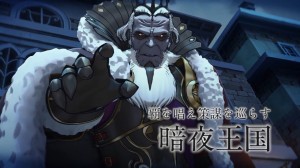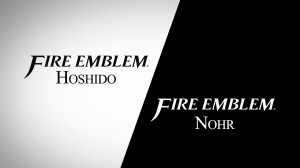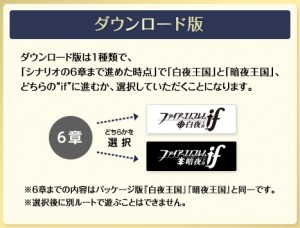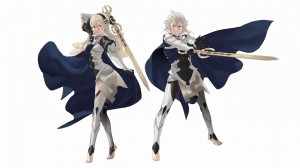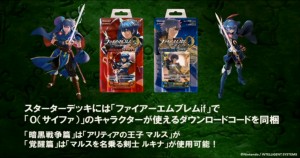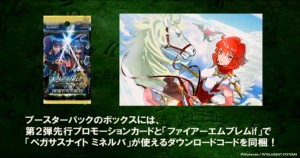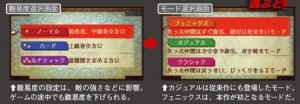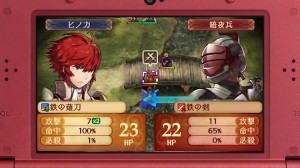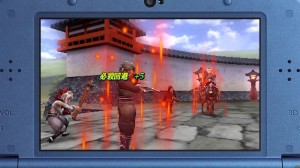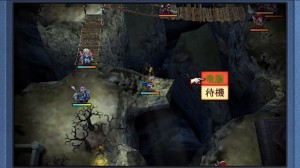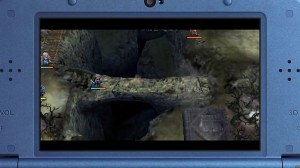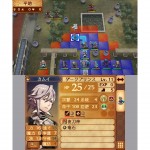Basic Premise
Fire Emblem if (as it’s known in Japan) tells the story of two nations at war: the peace-loving Hoshido and the glory-seeking Nohr. At the heart of the conflict is you–the Avatar and main character of the story; a youth born into the Hoshidan royal family, but raised by the Nohrian royal family.
As the battle reaches a climax, you are forced to make a great decision: whether to side with Hoshido, the land of your birth, or Nohr, the land where you were raised. Depending on who you side with, the story, characters and outcome will be drastically different.
Choosing Hoshido will lead to a more traditional Fire Emblem story where you work with your Hoshidan kin to repel the Nohrian invaders. In addition, there will be a world map-like system to level up characters and earn gold outside of the main story.
Opting to serve Nohr however will lead to a more complex and challenging story, as you and your Nohrian kin fight to reform the conflict-seeking Nohr from the inside. In this route, there are limited opportunities to gain experience and gold and victory conditions are more diverse.
Different Versions
In Japan at least, Fire Emblem if will be released as two separate versions: “Fire Emblem if Hoshido” and “Fire Emblem if Nohr“. The version you pick will determine which of the two nations you side with and the progression of the story.
Note: It is not yet known how the North American or European versions will be handled.
If you cannot choose one side over another, you can purchase the other campaign as DLC, for a discounted price. So if you bought Fire Emblem if Hoshido, you can buy the Nohr campaign and vice versa.
Fans worried about having the game split in half needn’t worry; according to Nintendo, each version by itself contains about as much content as the previous game, Awakening. So you won’t be paying for half a game if you buy one version.
There is also a major DLC expansion planned–a campaign where you don’t side with Hoshido or Nohr. This DLC costs the same as the Hoshido or Nohr DLC, suggesting it will be a sizable chunk of content. Difficulty-wise, it sits between Hoshido and Nohr.
Players going down the digital route won’t have to choose straight away, as only one digital version of the game exists.
Upon reaching Chapter 6–the point at which you must choose sides–digital buyers must perform a second download, this time for the Hoshido or Nohr campaign, to continue the game.
Since buyers have already paid for the “whole game”, the first campaign can be download for free (and the second as DLC, for a discounted price, just like for the packaged version).
Before Chapter 6, the content is the same for all campaigns. However, for those with concerns, this shared portion only accounts for 1/6th of the game.
Finally, if you want the premium route, you can buy the special edition of the game, which includes both campaigns on one game card, plus the “third path” DLC expansion and other trinkets.
For all versions, upon completion of Chapter 5, a save will be created on your 3DS console. If you ever decide to play a different campaign, you can start from your post-Chapter 5 save rather than from the very beginning.
Confused? See our handy table below…
| Version | Cost | What you get |
|---|---|---|
| Fire Emblem if Hoshido | 5076 Yen / 42.4 USD | Packaged game with Hoshido campaign |
| Fire Emblem if Nohr | 5076 Yen / 42.4 USD | Packaged game with Nohr campaign |
| Fire Emblem if digital version | 5076 Yen / 42.4 USD | Digital game where you play up to Chapter 6 and then get a free, one-time download of the Hoshido campaign or Nohr campaign |
| DLC: Hoshido | 2000 Yen / 16.7 USD | Hoshido campaign for Fire Emblem if Nohr or the digital version |
| DLC: Nohr | 2000 Yen / 16.7 USD | Nohr campaign for Fire Emblem if Hoshido or the digital version |
| DLC: Third Path | 2000 Yen / 16.7 USD | Third campaign for Fire Emblem if Hoshido, Nohr or the digital version |
| Fire Emblem if Special Edition | 9990 Yen / 83.4 USD | Packaged game with Hoshido and Nohr campaign, the Third Path DLC, a special artbook and FETCG card |
The Avatar
First appearing in the Japan-only Heroes of Light and Shadow and returning in Awakening, the customisable Avatar is in this game too. Unlike previous games, the Avatar is the main character of the game, not just an important side character.
Although in the promotional materials, the Avatar is nearly always named “Kamui” and sports the same appearance, players can customise the Avatar’s name, gender, appearance and voice, just like in previous games. By default, he/she starts in the Dark Prince or Dark Princess class.
In addition to the usual appearance choices, such as build, hair, hair colour and face, players can also select hair accessories (female only?) and facial features. The selection seems to be larger than previously too, with at least 27 hair colours to pick from, rather than 20.
Downloadable Characters
In a similar vein to the previous game, Awakening, this game will feature downloadable guest characters, although the current method to obtain them is slightly different.
The “Fire Emblem Cipher” trading card game that releases on the same day will include character download codes inside special packs.
| Product | Cost | What you get |
|---|---|---|
| “Shadow Dragon Chapter” Starter Deck | 1404 Yen / 11.8 USD | 50 preset cards, DLC: Marth, Prince of Altea |
| “Awakening Chapter” Starter Deck | 1404 Yen / 11.8 USD | 50 preset cards, DLC: Lucina, the Swordsman who claims to be Marth |
| “Blade of Heroes” Booster Box | 6048 Yen / 50.8 USD | 16 booster packs (10 random cards each), Fire Emblem if Promo card, DLC: Pegasus Knight Minerva |
Phoenix Mode
Phoenix Mode is a radical new mode where fallen characters are resurrected immediately on the next turn. According to the developers, it was introduced to sway newcomers to the series who are interested, but might think the game is too difficult for them to play.
This mode sits above the existing Casual Mode (fallen characters are resurrected after the mission’s end) and Classic Mode (fallen characters don’t come back) and, like those other modes, can be selected regardless of difficulty (Normal, Hard or Lunatic).
If players ever feel like the game is too difficult, there is the option to change the mode and/or difficulty in the middle of the game; for example, from Hard-Classic to Normal-Phoenix. This change is irreversible though and it isn’t possible to go back up to Classic.
Changes to the Weapon System
For the first time in the series since Fire Emblem Gaiden on the NES, weapon durability is no more. This means players can equip weapons without fear of them running out and thus try out weapons or strategies they may have shied away from in the past.
With durability gone, the developers have tried to make players think hard about which of the various weapons they should use in a given situation. For instance, some weapons may reduce the enemy’s critical rate, while others may be extremely powerful, but difficult to attack twice with.
Possibly related: Hoshido and Nohr seem to have their own set of weaponry, which could tie into this. Nohrian weapons include series staples, while Hoshidan weapons are eastern-inspired variants, such as naginatas instead of lances, katanas instead of swords and maces instead of axes.
Rebalanced Dual/Pair Up System
The Dual and Pair Up systems introduced in Awakening, which allowed two units to team up against the enemy, were popular amongst fans, but slightly too powerful. For this new game, the developers have attempted to re-balance these systems in a number of ways.
Firstly, it appears Dual Strikes–where a friendly unit provides a follow-up attack–are only possible if the friendly unit is adjacent on the map. In these situations, it’s said the two units adopt an Attack Stance. Follow-up attacks seem to deal reduced damage too, but perhaps are guaranteed to trigger.
Conversely, Dual Guards–where a friendly unit completely deflects an enemy attack–may be restricted to paired up units only. When two units pair up to become one unit, they adopt a Guard Stance. Characters have a “shield” gauge, which may affect their ability to deflect attacks.
This change means units can only benefit from follow-up attacks or protection from enemy attacks–and not both at the same time. This also creates more incentive for units to remain separate, to benefit from the increased offensive capabilities, rather than combining all the time, like in Awakening.
Secondly, enemy units can adopt the Attack Stance or Guard Stance, just like the player. So players must be cautious when there are many enemies around. Furthermore, if units from both sides have adopted a stance, there is the possibility of 2 versus 2 battles.
Dragon Vein
“Dragon Vein” is a draconic power wielded by carriers of dragon blood–namely, the Avatar, Aqua and the eight royal siblings. At certain points on the battle map (likely the glowing orbs of light), wielders of Dragon Vein can activate its power to alter the terrain of the map.
Effects of Dragon Vein are multitude and include creating rock bridges between cliffs, triggering earthquakes, flattening mountains, transforming desert into grassland or removing water from the sea.
Depending on how its used, players can create an advantage or even disadvantage for their army. Furthermore, it’s not just the player who can use Dragon Vein–the enemy can use it too; hinting at some complex battles with your opposing royal siblings.
Other Features
Characters can now equip 6 skills instead of 5 in Awakening. The first skill icon is also larger than the rest, although it’s unknown if this is purely aesthetic or has a special function. The best guess so far is that it’s a personal skill.
Monsters of some form are back; not dissimilar to the ones in The Sacred Stones or Gaiden. One monster is referred to as “Nosferatu” by the Avatar and another–or the same one–is slain by Marx in the first teaser.
